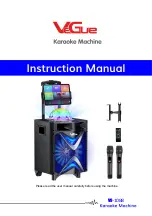
ARC RAYS CAN BURN EYES AND SKIN.
DANGER
Arc rays from the welding process produce intense heat and strong ultraviolet rays that can burn eyes and skin. Use the following table to select the appropriate shade
number for a Welding Helmet or Welding Face Shield.
1. Use a Welding Helmet or Welding Face Shield fitted with a proper shade of filter (see AS 60974-1, AS/NZS 1337.1 and AS/NZS 1338.1 Safety Standards) to protect
your face and eyes when welding or watching.
2. Wear approved safety glasses. Side shields are recommended.
3. Use protective screens or barriers to protect others from flash and glare; warn others not to watch the arc.
4. Wear protective clothing made from durable, flame-resistant material (wool and leather) and foot protection.
5. Never wear contact lenses while welding.
Recommended Protective Filters for Electric Welding
Description of Process
Approximate Range of
Welding Current in Amps
Minimum Shade Number of Filter(s)
Manual Metal Arc Welding -
Covered Electrodes (MMA)
Less than or equal to 100
8
100 to 200
10
200 to 300
11
300 to 400
12
Greater than 400
13
Gas Metal Arc Welding (GWAW) (MIG)
other than Aluminium And Stainless Steel
Less than or equal to 150
10
150 to 250
11
250 to 300
12
300 to 400
13
Greater than 400
14
Gas Metal Arc Welding(GWAW) (MIG)
Aluminium and Stainless Steel
Less than or equal to 250
12
250 to 350
13
Gas Tungsten Arc Welding (GTAW) (TIG)
Less than or equal to 100
10
100 to 200
11
200 to 250
12
250 to 350
13
Greater than 350
14
Flux-Cored Arc Welding (FCAW) -
with or without Shielding Gas
Less than or equal to 300
11
300 to 400
12
400 to 500
13
Greater than 500
14
Air - Arc Gouging
Less than or equal to 400
12
Plasma - Arc Cutting
50 to 100
10
100 to 400
12
400 to 800
14
Plasma - Arc Spraying
—
15
Plasma - Arc Welding
Less than or equal to 20
8
20 to 100
10
100 to 400
12
400 to 800
14
Submerged - Arc Welding
—
2 (5)
Resistance Welding
—
Safety Spectacles or Eye Shield
Refer to standard AS/NZS 1338.1 for comprehensive information regarding the above table.
5






































